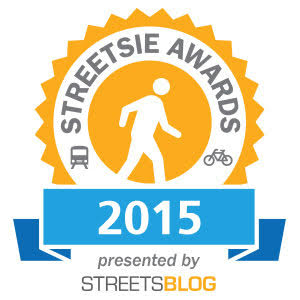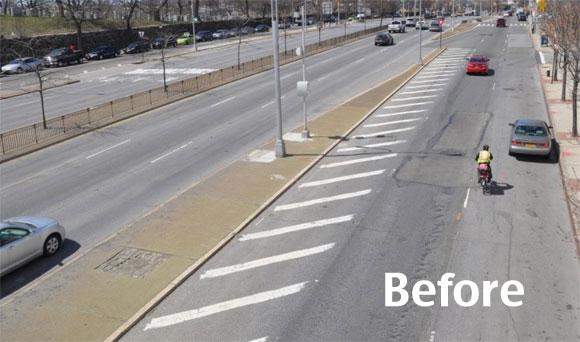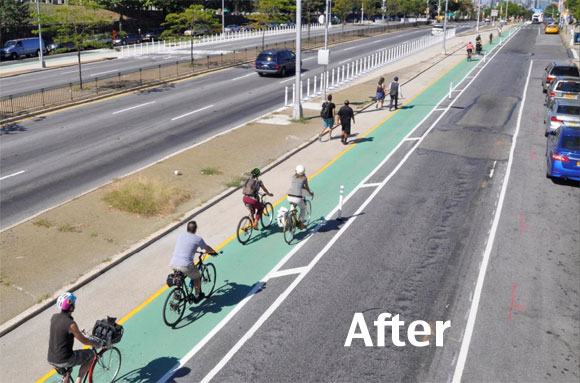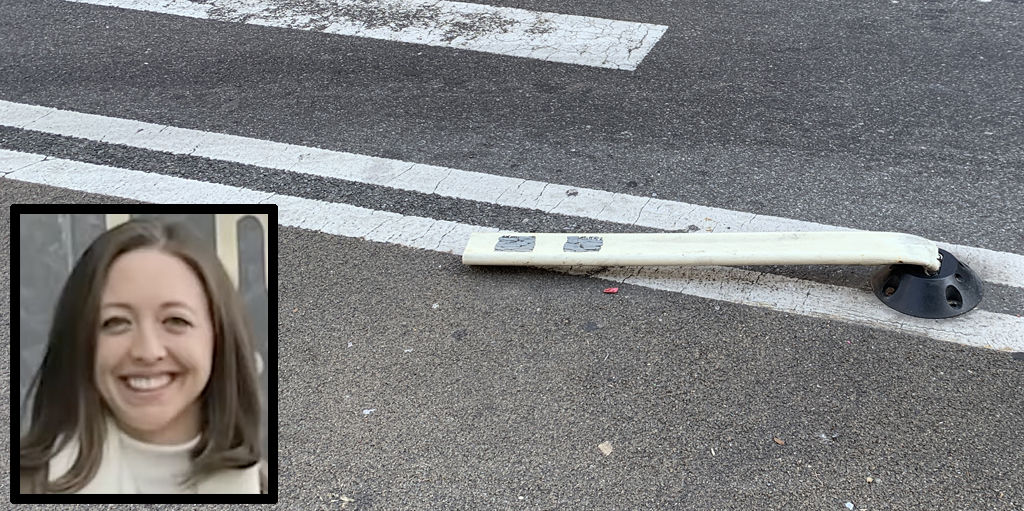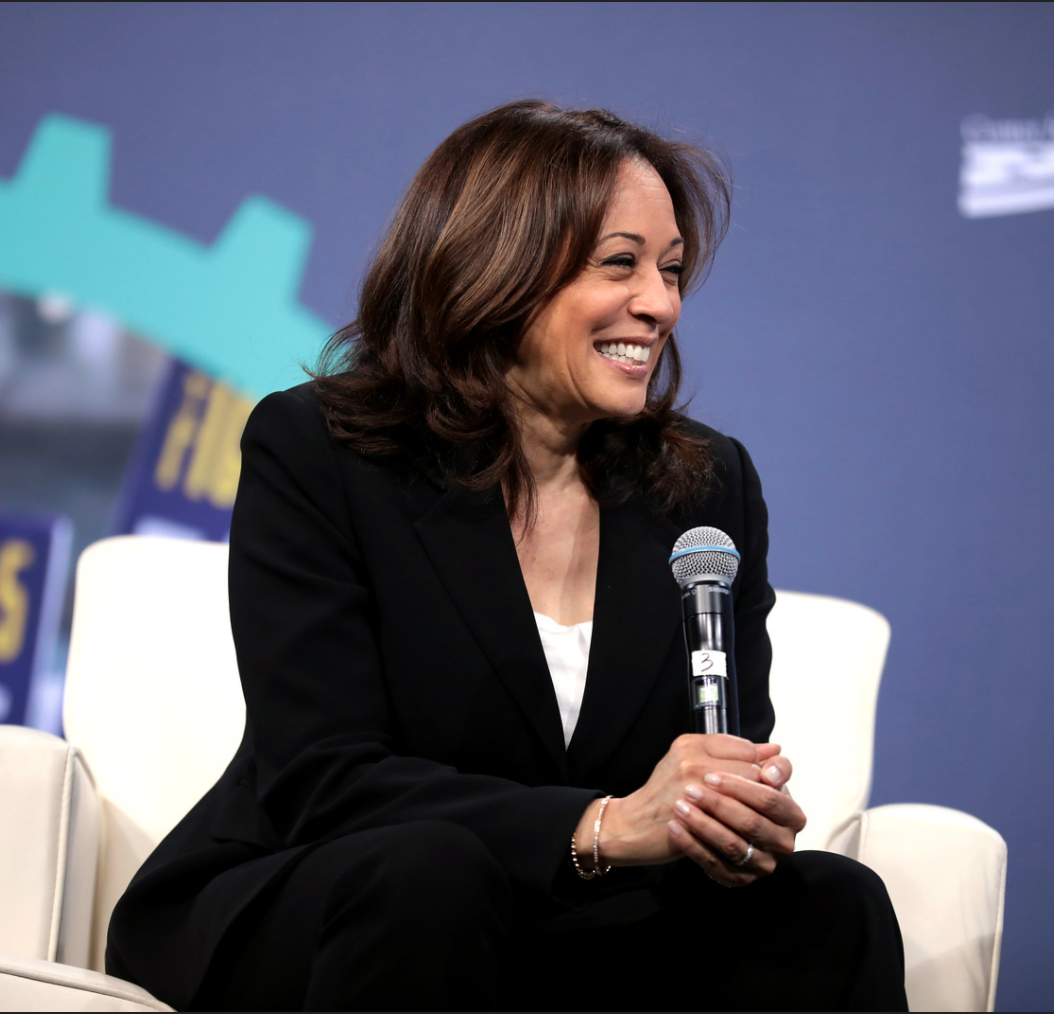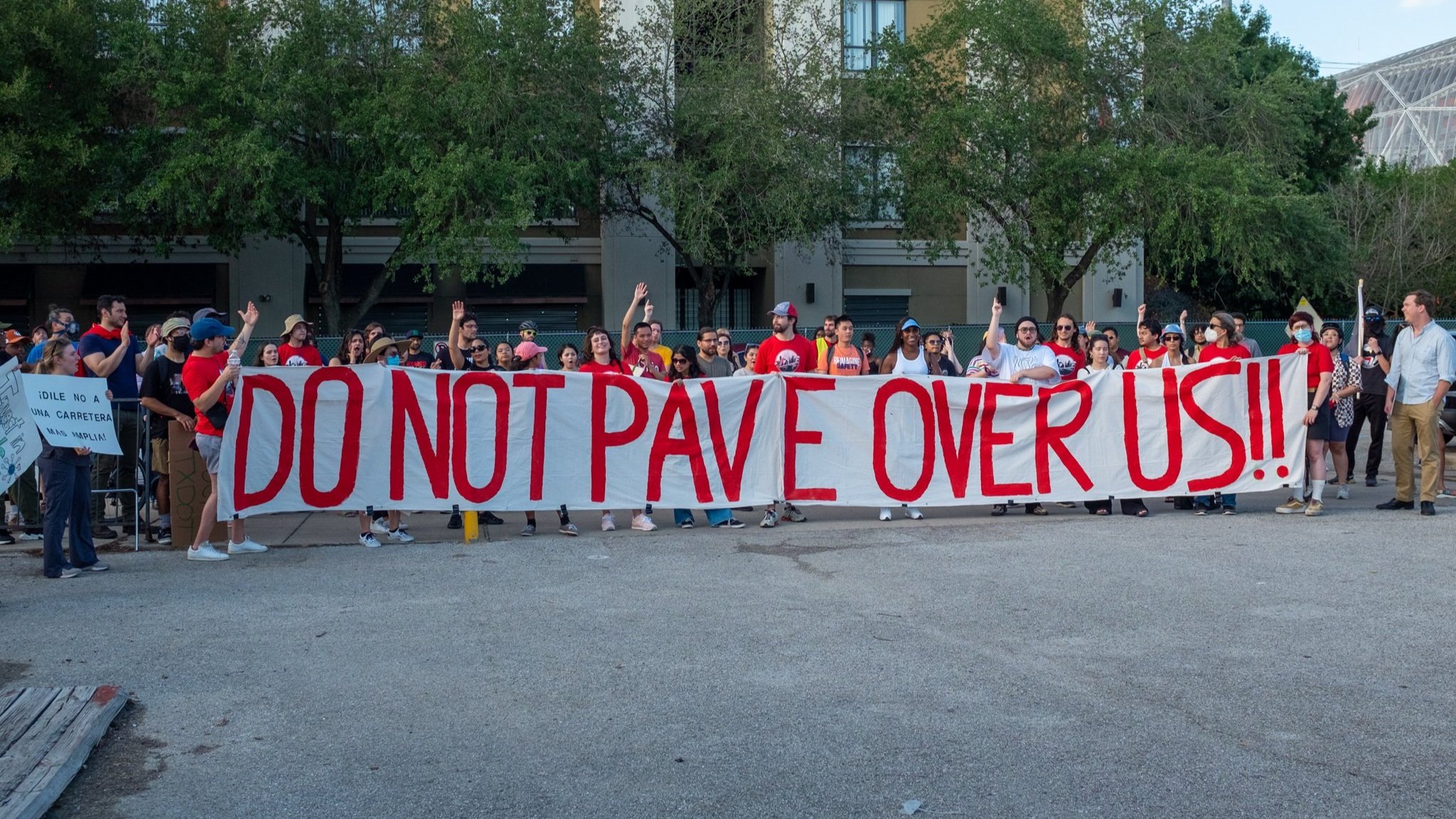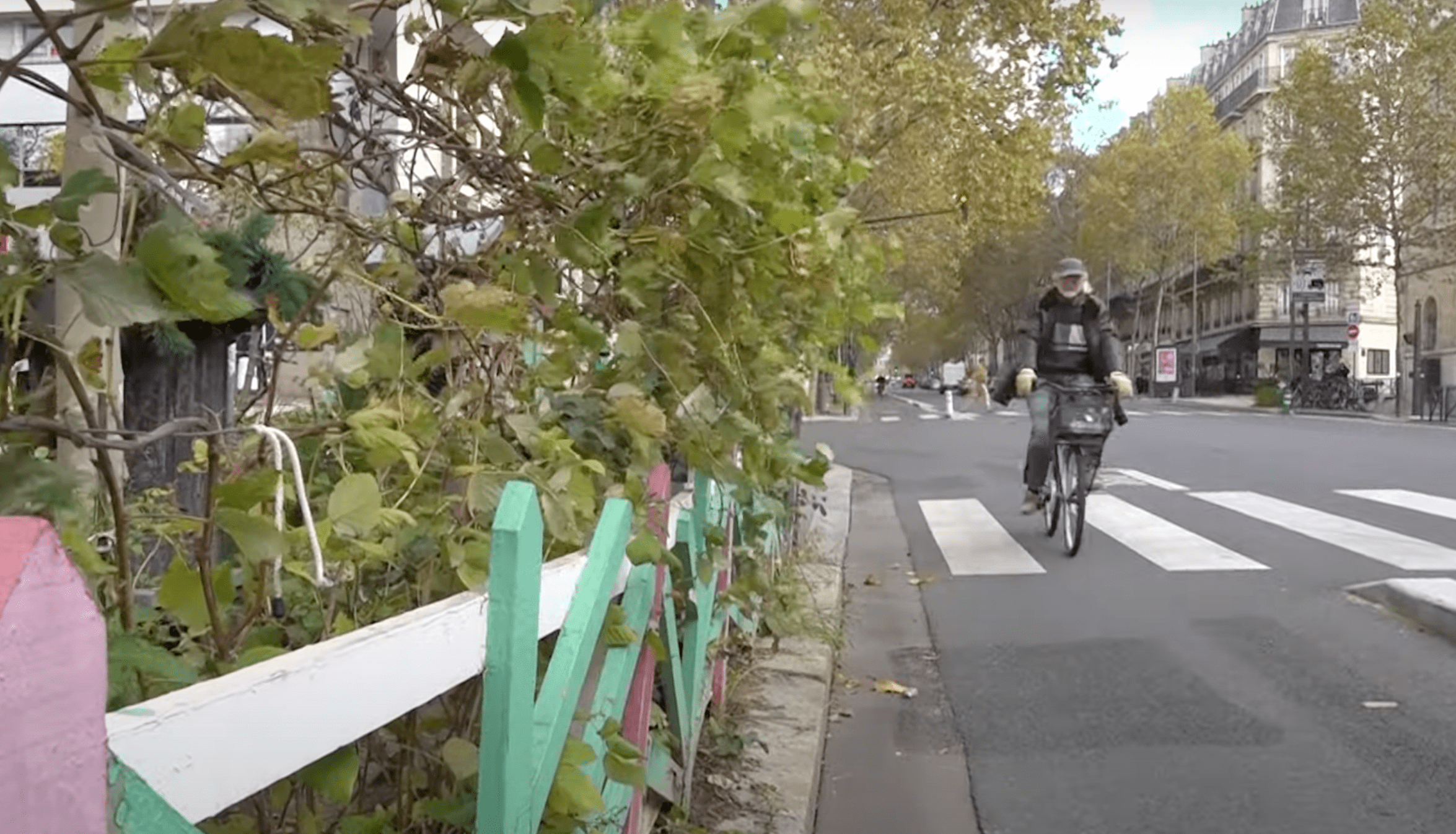The year is coming to a close and the votes are in for the 2015 Streetsie awards. We asked readers to choose the most transformative street transformations, the most villainous villains, the dodgiest boondoggles of the year -- and some of the races were razor close. Only a few can go down as the worst of the worst and the best of the best. Here they are, your 2015 Streetsie winners.
Best Urban Street Transformation
The six finalists for the best street redesign of 2015 broke new ground for American cities, including a pioneering protected intersection in Salt Lake City and a combination of bus rapid transit and protected bike infrastructure in downtown Chicago.
By a slim margin over Chicago DOT's transformation of Washington Street, the top vote-getter was New York City DOT's redesign of 1.3 miles of Queens Boulevard:
A surface highway spanning the length of Queens, this street has long been known as the "Boulevard of Death" -- embodying the worst aspects of car-centric street design in the nation's largest city. Too many people have lost loved ones on Queens Boulevard, and some of them have spoken powerfully about the need to make the street safer. None more so than Lizi Rahman, whose son Asif was killed by a truck driver while biking on the street nearly eight years ago. This was the year NYC DOT responded, carving out space for walking and biking on the corridor's service roads using paint and plastic bollards, while eliminating or calming dangerous slip lanes. Much more of Queens Boulevard needs to be overhauled for safety, but this project proved that the most dangerous street in the city can change.
The competition was stiff for this one. With 1,762 total votes cast, Queens Boulevard edged out Chicago's Washington Street by 25 votes. Seattle's University, Union, and Boylston Pedestrian Plaza was third, followed by Columbus's Summit Street protected bike lane, Los Angeles's Reseda Boulevard redesign, and Salt Lake City's protected intersection.
Worst Livable Streets Villain

The Koch brothers and their band of anti-transit surrogates eked out a win over Maryland's rail-killing governor, Larry Hogan, on Streetsblog readers' doo doo list.
The brothers' network of "think tanks" and political action groups went on a tear this year, sinking bus rapid transit in Nashville, turning legitimate concerns about Boston's MBTA into a nasty smear campaign, and taking aim at BRT in Albuquerque. The Albuquerque episode revealed the true colors of Randal O'Toole, of the Koch-funded Cato Institute, whose road show of deception typically involves castigating rail and pointing to buses as the answer. This time, O'Toole went on the offensive against a bus project -- because his mission is simply to kill transit projects, period.
To top it all off, the Kochs' flagship group, Americans for Prosperity, led a futile attempt to cut all federal funding for walking, biking, and transit.
Well deserved, guys.
Best Tactical Urbanism Win: Boston's Snow Tunnel
This was a real nail-biter, coming down to just five votes. But Boston's snow tunnel, which embarrassed the MBTA for plowing mountains of snow into an important path for cyclists beat Boston's flower-protected bike lane for top honors. Boston resident Ari Goldberger and his friends spent hours tunneling through a "15-foot mound of snow" to reopen the Medford bike path to the Wellington Station. Their efforts were rewarded with a mountain of local and national press coverage -- and now, a Streetsie! Well done.
Worst Boondoggle
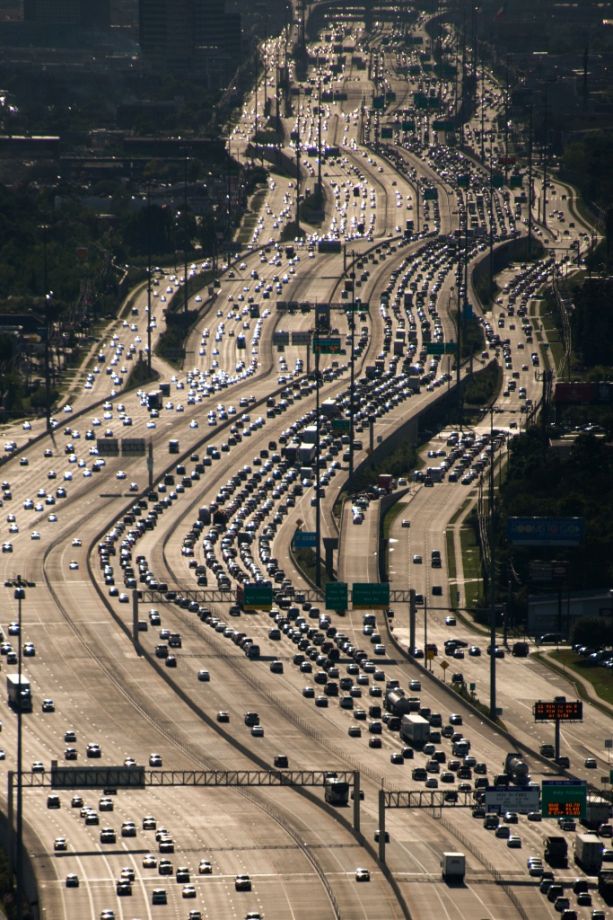
It's hard to top Houston's Katy Freeway as a monument to the futility of highway widening. After the freeway was expanded to 23 ridiculous lanes -- making it "the world's widest" highway -- at a cost of $2.8 billion, traffic actually got slower: 30 percent to be exact. Too bad Texas has essentially doubled down on this kind of response to congestion, ensuring that the Lone Star State will be providing more bad examples well in the future.
Best Sign of Progress
Never underestimate the influence of engineering standards on the shape of our streets. For decades, Federal Highway Administration rules led cities to design major surface streets like highways, with features like 12-foot-wide lanes and "clear zones" that lead to higher driving speeds. That could change soon, since this year the FHWA proposed new standards that will give cities much more flexibility to design streets for an urban setting. The agency noted that research doesn't support the old assumption that design standards for highways also make surface streets safer.
Now, let's make sure the rule changes are approved.
Biggest Letdown
The new five-year transportation bill is the most significant piece of federal transportation policy in more than a decade, but it's still a relic of another era, extending the highway-centric status quo for a few more years.
You won't find much of a response to the pressing economic and environmental issues America is facing today in this bill, other than a few bright spots. What you will find is the avoidance of anything even remotely daring. Spending on highways will continue as before -- four dollars for every dollar devoted to transit -- while driving will be extra-subsidized as we head into a new, hotter decade, since no one wants to raise the gas tax. Not that anyone was really expecting more of this Congress, but there was an extra sting to it all: While the nations of the world were gathered in Paris for the COP21 climate summit, Washington was committing to five more years of policy that promotes energy-intensive sprawl.
